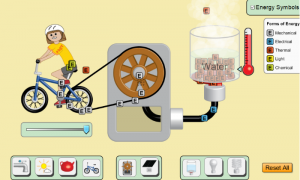Determining Bonding Types:
In this experiment, we were given three different types of substances, A, B, and C. However, we do not know the identity of each substance, therefore, we have to determine which substance is paraffin, sucrose and sodium bicarbonate based on some of their physical properties. In this lab, we tested two different characteristics, melting point and solubility, to figure out what type of bond the substance has.
Data and Analysis
| Data Table: Melting Points |
| |
Observations about the solid substance |
Melting Order |
Ionic, Covalent or
Polar Covalent? |
Reasoning |
| Substance A |
melt slowly
Turn brown
The smell comes out |
2 |
polar covalent |
has a low melting point but not as low as those in the non-polar covalent |
| Substance B |
nothing happen yet |
3 |
ionic compound |
it has a high melting point |
| Substance C |
melt very quicklyturn into liquid
The smell out |
1 |
non- polar covalent |
has a low melting point |
| Data Table: Solubility in water |
| |
Observations |
Solubility |
Ionic, Covalent or Polar Covalent? |
Reasoning for identification |
| Substance A |
When put in the solvent, the substance sink |
Soluble |
polar covalent |
since water has is a polar covalent with both positive and negative charge, therefore compound that has charge (ionic and polar) would be attracted to the water molecules |
| Substance B |
when put in the solvent, the substance sink,
melt quickly, faster than sugar |
Soluble |
ionic compound |
since water has is a polar covalent with both positive and negative charge, therefore compound that has charge (ionic and polar) would be attracted to the water molecules and easily breaks the compound bonds |
| Substance C |
When put in the solvent, the substance float |
Insoluble |
non-polar covalent |
non-polar compound doesn’t have charges |
| Analysis Data Table –Compiling & Interpreting Results |
| |
Melting Point Order |
Solubility |
Ionic, Covalent or Polar Covalent? |
| Substance A |
2 |
Soluble |
Polar Covalent |
| Substance B |
3 |
Soluble |
Ionic |
| Substance C |
1 |
Insoluble |
Non-polar covalent |
Result
What is the identity of substance A? What is your evidence and reasoning for this identification?
Substance A has a low melting point which means that it is either a polar or non-polar covalent compound. However this substance is soluble, therefore it is a polar covalent compound. Therefore, substance A is sucrose.
What is the identity of substance B? What is your evidence and reasoning for this identification?
The identification of substance B be is sodium carbonate. This substance has a high melting point and is quickly dissolved in water, which is two of the identification of an ionic compound.
What is the identity of substance C? What is your evidence and reasoning for this identification?
Substance C has a low melting point which means that it is either a polar or non-polar covalent compound. However, it is insoluble, which are the identification of a non-polar solvent compound. Since paraffin wax is the only non-polar covalent compound, substance C is paraffin wax.
One source of error in this experiment could have been the heat intensity of the hot plate, some part of this hot plate might be hotter (the inner part), therefore, the substance that is put in that place might melt faster than the other. This can possibly change the order of which substance starts to melt first.
I would reduce the error and improve the lab by…
I way I would do to reduce this error is to melt the substance one by one, as well as putting that substance on the same location. As well as use timer to record how long it takes to melt each substance.

